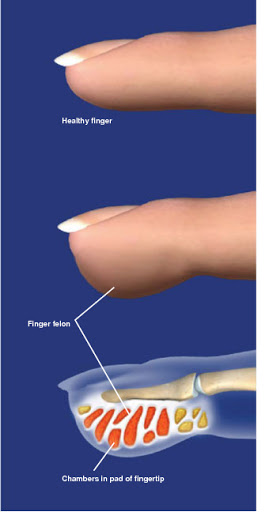Today's post is short and sweet!
At one point or another in the ED you will encounter a case when a ring is stuck on a finger due to swelling (anasarca, envenomation, infection, burn, trauma, etc.). It is important to remove the ring so that the finger does not constrict blood flow distally and lead to ischemia.
An easy solution would be to cut the ring off, especially if it is made of a material that you could cut through. However, sometimes the patient would like to keep the ring and avoid damaging it.
In this scenario, you can use a string/rubber band/oxygen mask strap to help reduce the swelling and slide the ring off the finger.
This is done by wrapping the finger with the string starting around the distal end of the finger and moving proximally towards the ring.
Then tuck the string under the ring to the other side using either forceps, hemostat, or any probing device.
You could also hold the extremity above the level of the heart to increase venous return and help with reduction of swelling.
You then pull the string and the ring will slide off the finger while simultaneously unwrapping from around the finger.
If the patient is not able to tolerate the pain, you may perform a digital block prior to wrapping the string around in order to provide some anesthesia.
Video of how to perform this procedure: https://www.youtube.com/watch?v=onOnJOtE_X8


